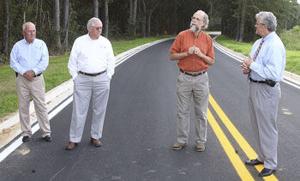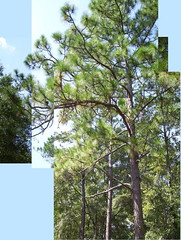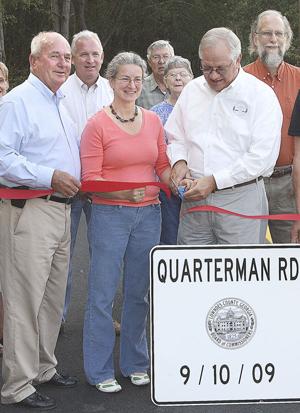
The Valdosta Daily Times caught me working on being tactful.
Matt Flumerfelt’s
writeup actually conflates two different county commission meetings, but gets the gist right:
The fate of the tree canopies lining the rural road were thought to hang in the balance. Several residents spoke in favor of the paving, citing dangerous conditions along the road during periods of stormy weather.
John and Gretchen Quarterman, whose ancestors lent their name to the country lane, led the fight to preserve the road in its original pristine dirt-road condition.
 The forest along Quarterman Road is “a scrap of the longleaf fire forest that used to grow from southern Virginia to eastern Texas,” said John Quarterman following the ribbon-cutting ceremony. “This forest has been here since the last ice age.”
The forest along Quarterman Road is “a scrap of the longleaf fire forest that used to grow from southern Virginia to eastern Texas,” said John Quarterman following the ribbon-cutting ceremony. “This forest has been here since the last ice age.”
Quarterman Road, pre-paving, was the kind of dirt road down which Huckleberry Finn might be envisioned skipping barefoot with a fishing rod projecting over one shoulder.
It was the kind of road near which Thoreau might have planted a cabin.
“Many people don’t know that a longleaf pine forest has more species diversity than anything outside a tropical rain forest,” Quarterman said. “In our woods, we have five species of blueberries, …
Oh, the beaver will be mad. I forgot to mention the beaver.
 The rest of the story is on the VDT web pages.
More pictures of the event in the previous blog entry.
The rest of the story is on the VDT web pages.
More pictures of the event in the previous blog entry.
For pictures of what lives in the forest, see
longleaf burning
gopher tortoises,
snakes,
frogs,
bees and butterflies,
spiders and scorpion,
and
raccoon,
and beautyberry, pokeberry,
passion flower, pond lily, ginger lily, Treat’s rain lily (native only to south Georgia, north Florida, and a bit of Alabama), thistle, sycamore, palmetto, mushrooms,
lantana, magnolia, grapes, yellow jessamine, dogwood, and native wild azaleas.
The VDT has a good picture of Gretchen cutting the ribbon.
But it’s not over just because one road project is completed:
“More people around the county seem to be paying attention these days. Commissioners tell us that already another road in the county has had its canopy saved during paving, and the commission has promised residents of Coppage Road that if their road is paved, their canopy will be saved. Commissioners even seem to like the idea of recognizing canopy roads as a feature of quality of life for residents of the county and for visitors.”
We have a forest. The county just has roads.
Now let’s go see what they’re doing to the rest of our roads. And schools, and waste management, and biofuels, and industry….
If you’d like to help, please contact the Lowndes Area Knowledge Exchange.
 Dogs don’t care about TV unles they’re on it; culverts are much more fun.
Yellow Dog was curious enough
to sniff around the TV camera,
but mostly they sniffed under things, laid in the dirt, and sat in the doggie fort.
Dogs don’t care about TV unles they’re on it; culverts are much more fun.
Yellow Dog was curious enough
to sniff around the TV camera,
but mostly they sniffed under things, laid in the dirt, and sat in the doggie fort.






